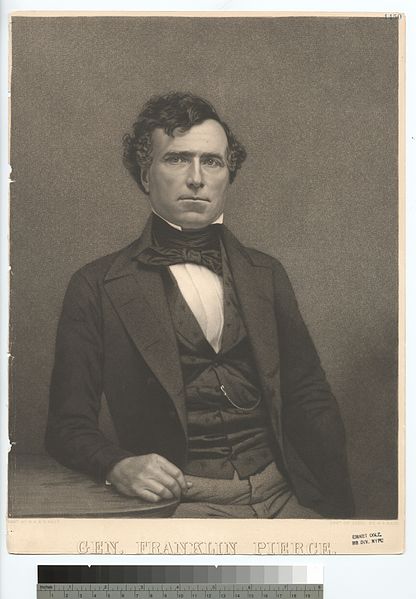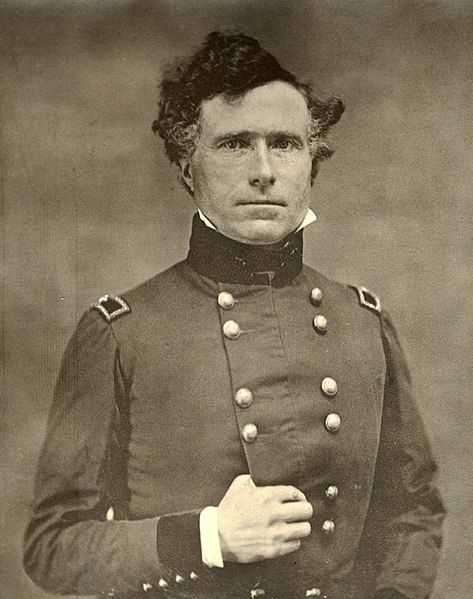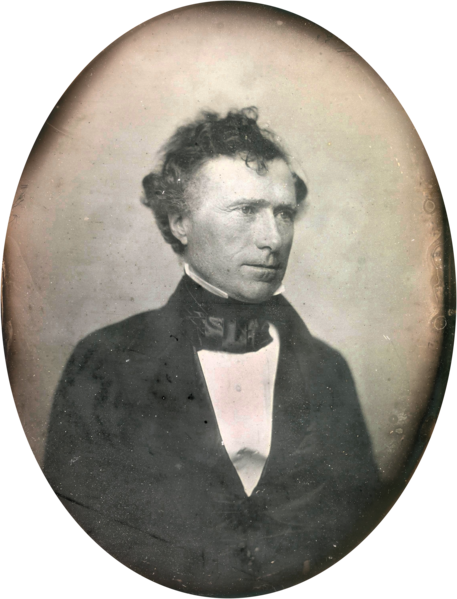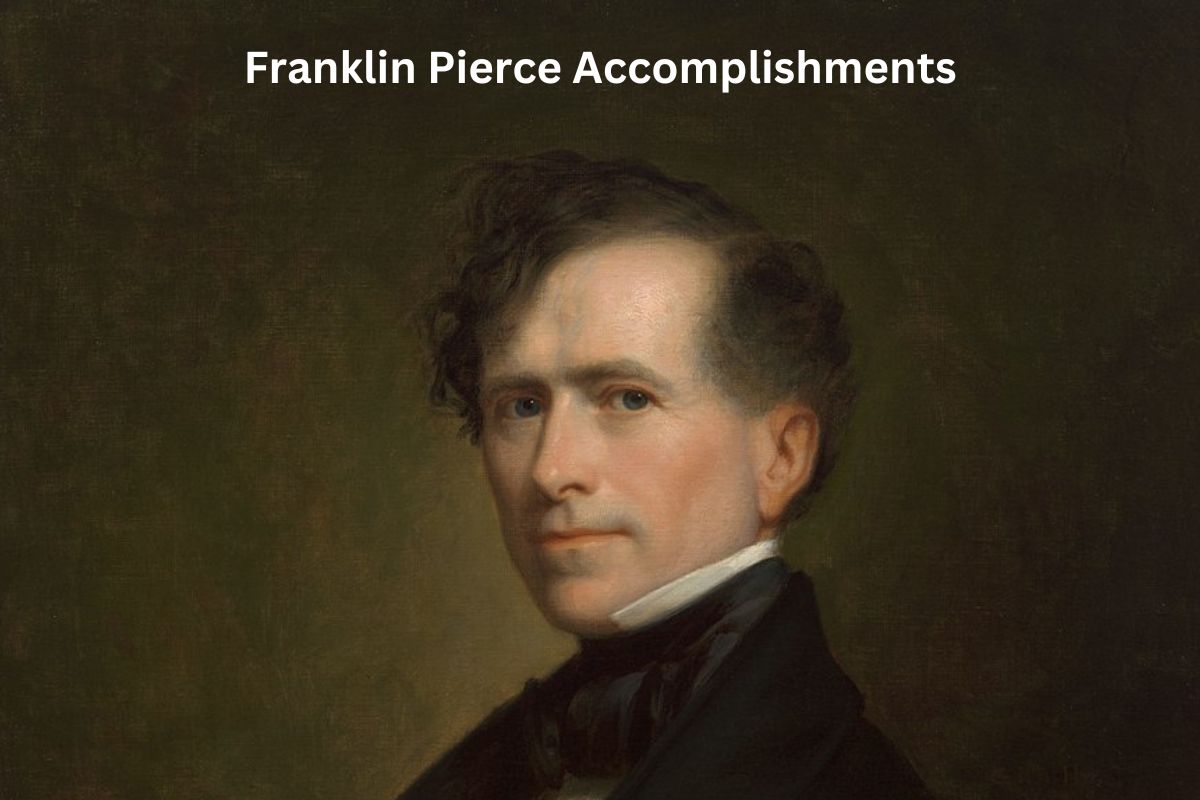Franklin Pierce served as the 14th President of the United States from 1853 to 1857.
His presidency was marked by significant events and decisions, including the acquisition of territory through the Gadsden Purchase, the controversial Ostend Manifesto, and the divisive Kansas-Nebraska Act.
Additionally, Pierce’s support for the Fugitive Slave Act and his use of presidential vetoes played prominent roles in his administration. This brief overview provides insight into the key aspects of Franklin Pierce’s time in office.
Accomplishments of Franklin Pierce
1. Gadsden Purchase
In 1853, Franklin Pierce negotiated the Gadsden Purchase, acquiring a 29,670-square-mile strip of land from Mexico for $10 million. This land extended into present-day southern Arizona and New Mexico.
The primary motivation behind the purchase was to secure a suitable southern route for a transcontinental railroad. The Gadsden Purchase provided a more practical and flat route compared to the more mountainous terrain further north.
Also Read: Facts About Franklin Pierce
The acquisition of this land helped to define the modern borders of the continental United States, resolving some of the remaining territorial disputes stemming from the Treaty of Guadalupe Hidalgo in 1848.

2. Ostend Manifesto
The Ostend Manifesto was a secret diplomatic memo drafted by American diplomats in Ostend, Belgium, in 1854. It outlined the idea that the United States should acquire Cuba from Spain, either through diplomatic means or, if necessary, by force.
The document argued that the acquisition of Cuba would benefit the United States both economically and strategically. It suggested that if Spain refused to sell, the U.S. would be justified in using force to obtain it.
The Ostend Manifesto was met with significant controversy and criticism, both domestically and internationally. It was seen by many as an aggressive and imperialistic approach, and it was ultimately abandoned due to opposition within the United States.
3. Kansas-Nebraska Act
The Kansas-Nebraska Act, signed into law by Franklin Pierce in 1854, had a profound impact on the issue of slavery in the United States.
This act repealed the Missouri Compromise of 1820, which had prohibited slavery in the northern part of the Louisiana Territory above the 36°30′ parallel, including present-day Kansas and Nebraska.
Instead of a federal decision on slavery, the act allowed the residents of these territories to determine whether slavery would be permitted through popular sovereignty, which led to violent conflicts between pro-slavery and anti-slavery settlers in the region.
This turmoil in Kansas became known as “Bleeding Kansas” and contributed to the growing tensions between the North and South that eventually led to the American Civil War.
4. Bilateral Trade Treaties
During Franklin Pierce’s presidency, his administration pursued several bilateral trade treaties, with one of the most notable being the Treaty of Kanagawa signed with Japan in 1854.
The Treaty of Kanagawa, negotiated by Commodore Matthew Perry, marked the opening of Japan to foreign trade after centuries of isolation. It allowed American ships to refuel and resupply at two Japanese ports, which was a significant step in expanding American trade interests in Asia.
This treaty paved the way for increased economic and diplomatic relations between the United States and Japan, leading to further treaties and trade agreements in the years that followed.

5. Nicaraguan Transit Route exploration
During Pierce’s presidency, there was significant interest in finding a viable transit route across Central America that would connect the Atlantic and Pacific Oceans. Such a route would greatly reduce travel time and costs for American trade and commerce.
Pierce’s administration explored the possibility of constructing a transit route across Nicaragua, which would later be known as the Nicaragua Canal. While the canal project did not come to fruition during his presidency, it laid the groundwork for future efforts to build a canal in the region.
The idea of a canal across Nicaragua would eventually give way to the construction of the Panama Canal in the early 20th century, with significant economic and strategic implications for the United States.
6. Navy expansion
Franklin Pierce’s administration oversaw the expansion and modernization of the United States Navy.
This expansion was driven by the need to protect American interests and project power globally. The introduction of steam-powered warships marked a significant advancement in naval technology during this period.
The expansion of the Navy was seen as essential for safeguarding American trade routes, protecting American citizens abroad, and asserting American influence in international affairs.

7. Oregon Treaty implementation
The Oregon Treaty, signed in 1846 during the presidency of James K. Polk, settled a longstanding dispute between the United States and Britain over the Oregon Territory. It established the 49th parallel as the border between the United States and Canada from the Rocky Mountains to the Pacific Ocean.
Franklin Pierce’s administration continued the implementation of the Oregon Treaty, overseeing the peaceful settlement of the territory’s boundary dispute. This treaty secured for the United States what is now Oregon, Washington, and parts of Idaho and Montana.
The implementation of this treaty was significant in extending American territory to the Pacific coast and avoiding potential conflicts with Britain in the Pacific Northwest.
8. Presidential vetoes
Franklin Pierce used his presidential veto power to reject several bills passed by Congress during his presidency. Some of these vetoes were notable for their impact on domestic policy.
For example, Pierce vetoed a bill aimed at providing funds for the construction of a mental institution in the District of Columbia. He argued that the federal government should not be involved in such matters, leading to a debate over the government’s role in social issues.
His use of the veto power reflected his adherence to a strict interpretation of the Constitution and limited federal government involvement in social and economic matters.
9. Support for the Fugitive Slave Act
Franklin Pierce was a strong supporter of the Fugitive Slave Act of 1850, which was part of the Compromise of 1850. This act required the return of escaped slaves to their owners, even in states where slavery was illegal.
Pierce’s support for the Fugitive Slave Act was deeply controversial, particularly in the Northern states. Many Northerners opposed the act’s enforcement and saw it as an infringement on states’ rights.
The Fugitive Slave Act heightened tensions between the North and the South, contributing to the divisions that eventually led to the American Civil War.
10. Democratic nomination and election
Franklin Pierce secured the Democratic Party’s nomination for the presidency in 1852. He was nominated as a compromise candidate after the Democratic National Convention was deadlocked.
In the general election, Pierce and his running mate, William R. King, won a decisive victory over their Whig Party opponents, General Winfield Scott and William A. Graham.
Pierce’s election demonstrated his ability to navigate the political landscape of the time, but it also foreshadowed the challenges his administration would face, particularly concerning the divisive issue of slavery.
